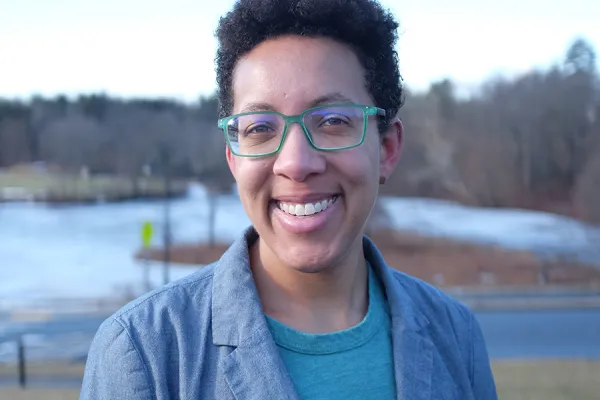Prof. Kristen Dorsey: Origami and Engineering
Research & Inquiry

Published April 1, 2019
Assistant Professor of Engineering Kristen Dorsey has loved origami since she was a child. “My parents were very tolerant of me trying to fold 1,000 paper cranes,” says the Chicago native, with a smile.
At Smith, Dorsey is using the art of origami paper folding to advance the science of mechanical design. Her research is supported by a CAREER grant award from the National Science Foundation.
Smith has a stellar record of NSF faculty grants: Dorsey is one of nine faculty members who have received prestigious CAREER awards since the program was established in 1995.
The grants are awarded to early-career faculty leaders who are working on projects that combine research and teaching. In addition to collaborating with Smith students in her lab, Dorsey will offer a series of workshops on soft sensors to middle school teachers and students in the region.
Here’s what she had to say about her research:
What are the goals of your research project?
“We’re investigating how different origami patterns can contribute to fabricating soft rubber sensors to more accurately measure complex human motions. A Miura Map fold origami pattern [a green swath of paper with folds like small hills] works so that if you stretch it one way, it also stretches the other way. The bending and twisting that sensors do changes their electrical properties. What we want to see is whether we can design a sensor borrowing from origami structure that can detect strain without responding to pressure. That will help us make better measurements.”
What are some practical applications of your research?
“In the lab, we’re working with soft robots—fingers—made of flexible material. The soft robot project is a collaboration with the Wood Lab at Harvard, which has an application in mind for designing a 'finger' capable of picking something up without crushing it, as you would if you were a marine biologist picking up a piece of coral. Another application involves putting soft sensors in clothing and other wearable devices, to measure things like a person’s range of motion. There are even applications in virtual reality entertainment—sensing how someone is pulling back a bow, or some other motion.”
What’s the most exciting aspect of your project?
“Working with students is an exciting and important component of this project. One of the challenges of this research is figuring out where to start. I wrote a proposal and have these ideas—now I get to test them out. One of the things I like best about working with Smith students is how excited they are and how many cool ideas they bring to the lab.”
What impact will the NSF grant award have on your research?
“It’s an outside signifier that this project is interesting and has merit. My colleagues at Smith have been amazingly supportive in reading my proposal and giving me feedback. I am driven by what is impactful about science—who we are designing for, and what the impact of research will be. I’m always surrounded at Smith by thinking not just about what the data shows, but what it will mean to society.”